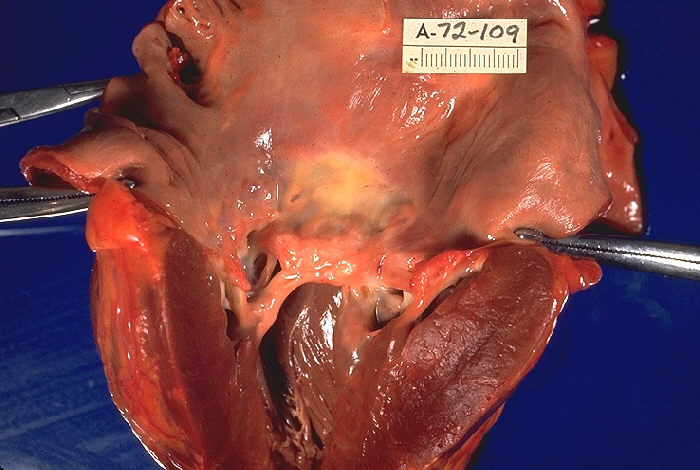Rheumatic Fever-Related Antigen

Genetic predisposition to rheumatic fever has intrigued investigators since Cheadle (1889) first noted the familial aggregation of rheumatic fever. Wilson et al. (1943) suggested that susceptibility might be an autosomal recessive trait. Taranta et al. (1959) suggested reduced penetrance because of a low concordance in monozygotic twins. Patarroyo et al. (1979) found that a serum from a multiparous woman identified a novel B-cell alloantigen marker, 883, in persons previously identified as having had rheumatic fever with or without subsequent rheumatic heart disease. They found that 71% of patients typed in New York and 74% of patients typed in Bogota expressed this antigen on their B cells as compared with only 17% in the 2 disease-free control groups tested. The marker did not appear to be associated with any of the known MHC antigens. Zabriskie et al. (1985) produced monoclonal antibodies by immunization of mice with B cells from known 883(+) and 883(-) inactive rheumatic fever patients who had been part of the original study. Two monoclonal antibodies, which in combination identified 92% of patients as compared with about 21% of disease-free controls, were found. Khanna et al. (1989) developed a third monoclonal antibody, labeled D8/17, that identified a B-cell antigen present in 100% of rheumatic fever patients. The percentage of cells in unaffected sibs and parents was 14.6 and 13%, respectively. The percentage of positive cells in acute poststreptococcal glomerulonephritis probands, unaffected sibs, and parents was 2.96, 3.86, and 2.8%, respectively. A low level of B cells (5-7%) bearing the D8/17 marker was seen in controls. The segregation pattern of phenotypes defined by the percentage of D8/17 positive cells within HLA-typed rheumatic fever families was consistent with autosomal recessive inheritance unassociated with the MHC system.
In Israel, Harel et al. (2002) studied 22 children with rheumatic fever and 9 ethnically matched, disease-free controls to determine whether the B-cell alloantigen D8/17 is found in Israeli patients with rheumatic fever. They found that the mean percentage of B cells expressing the marker was 11.5 +/- 2.9 in the patients and 4.24 +/- 2.7 in the controls (P less than 0.001). There was no statistically significant difference in the frequency of the marker by ethnic origin. The results supported the suggestion that D8/17 is a disease-specific marker with worldwide distribution which may serve as a diagnostic tool in patients with suspected rheumatic fever.
Rheumatic fever represents a classic example of difficulties in distinguishing genetic susceptibility from purely environmental factors that might aggregate within families. St. Lawrence (1922) suggested familial susceptibility. Wilson and Schweitzer (1937) and Wilson et al. (1943) concluded that susceptibility is an autosomal recessive trait. They based their findings on their own data from New York and on the MRC data from London and Glasgow. They were, however, criticized by Stevenson and Cheeseman (1953) and Uchida (1953). Analysis of susceptibility is complicated by the facts that pharyngeal infection by Lancefield group-A hemolytic streptococci is necessary as a precipitating factor, that early treatment with antibiotics can prevent the development of rheumatic fever, and that antimicrobial prophylaxis is also effective. Sit (1990) did new analyses of the 4 sets of data referred to above and concluded that they conform closely with expectation on the basis of the autosomal recessive hypothesis.